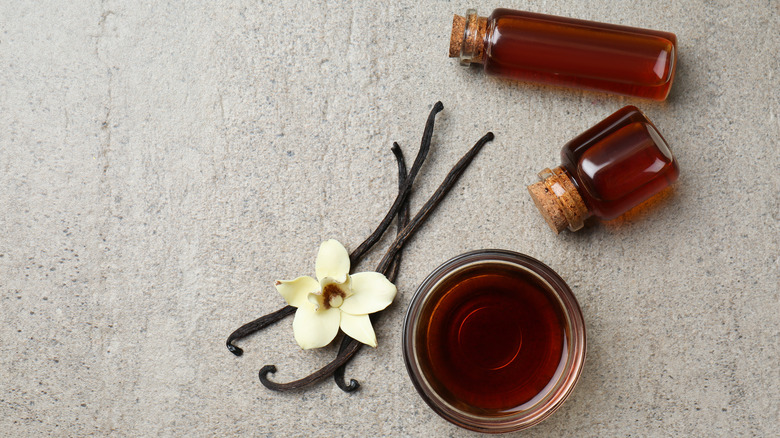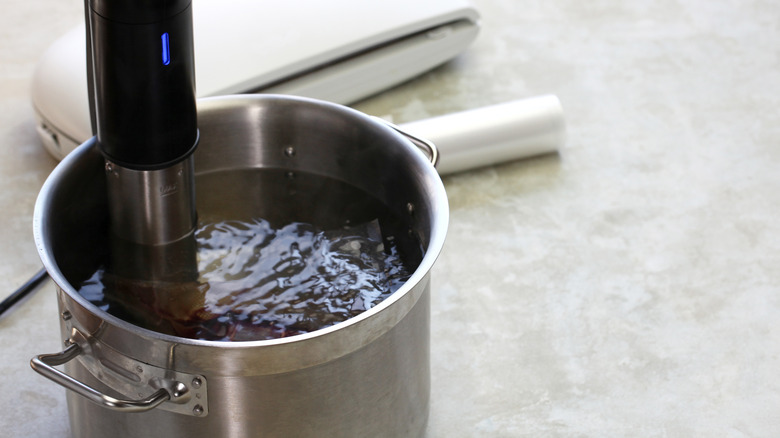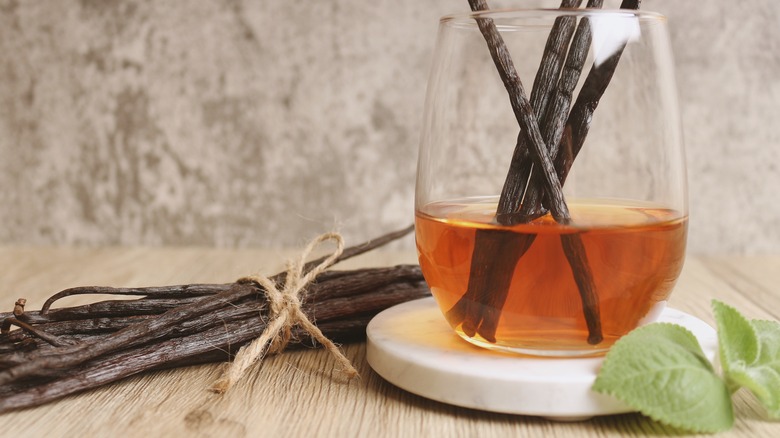For The Best DIY Vanilla Extract, Break Out The Sous Vide Device
When it comes to baking, there aren't many things you can make without the ultra-flavorful essence of vanilla. For starters, vanilla doesn't affect the texture or structure of baked goods like other ingredients do, such as baking soda, eggs, and so on — but it does affect the taste tremendously. According to The Picky Eater, vanilla is there to enhance the flavor of the other delicious components present, whether that means bringing out the fattiness from the butter or the richness of the egg yolks. In fact, without it, recipes that almost always require it such as cookies, turn out bland, flat, and incomplete (via Into The Cookie Jar). It's a necessary ingredient if you're going for flavor.
And let's face it, it's not only for baking. According to Honest Food Talks, vanilla extract has several other skills. If you're needing an extra browning on veggies that you're stir-frying, or onions that you're caramelizing for soup, adding a splash of vanilla will do the trick. Furthermore, adding a few drops of vanilla extract into your warm beverages such as coffee, hot chocolate, or tea, or even into your boozy cocktails, can elevate and add sweetness. However, for vanilla extract to be so essential and so versatile, the bottled stuff at the store is quite pricey. There's got to be a way to make it at home.
It extracts more flavor
According to Serious Eats, when opting to make your own vanilla extract in hopes of saving a few bucks, the technique often involves soaking whole vanilla pods in alcohol at room temperature for a while. These methods take time, patience, and usually yield a bottle of vanilla that is less flavorful than the store-bought stuff.
When making your own vanilla, temperature plays a huge role in how it turns out. If your jar of liquor-soaked vanilla pods are held at too low of a temperature, the flavor won't be extracted enough. This is why keeping it at room temperature doesn't quite suffice. On the other hand, if it is held at a temperature too high, the flavor of the vanilla is likely to alter and diminish. The process and procedures that vanilla extract companies undergo have long been tested to yield consistent results, which is why it is deemed much harder to re-create at home (via Simply Recipes). However, if you own a sous-vide, this might be the ticket to extracting the most flavor, as its biggest skill is maintaining a water bath temperature for longer periods of time.
How to do it
To execute correctly, Serious Eats places 750 grams of vodka and 82.5 grams of vanilla bean pods into a jar and seals it tightly. Next, they place the jar into a water bath, in which the water reaches just below the lid of the jar, and place the sous vide inside. Set the temperature to 145 degrees Fahrenheit, cover the remaining area with foil, and let it do its thing for three hours. From there, you can carefully remove the jar from the hot water, place it on the counter, and allow it to come to room temperature. In conclusion, this method conquered what seemed like the impossible — and yielded more flavor than a bottle of store-bought vanilla extract.
Because vanilla extract is alcohol-based, over time, the flavors tend to grow stronger and more concentrated. Therefore, according to Lacademie, vanilla extract is one baking staple that pretty much never goes bad. However, it is at its prime between the first five and 10 years since it was made.


